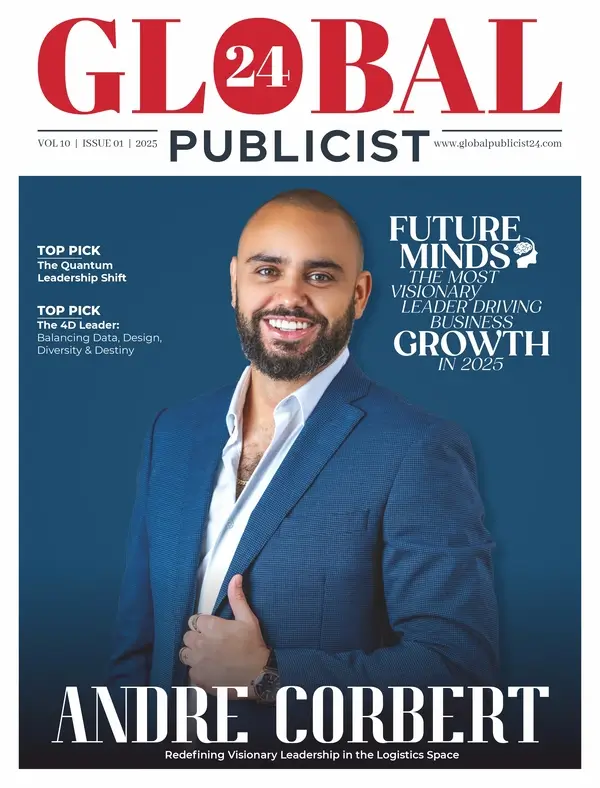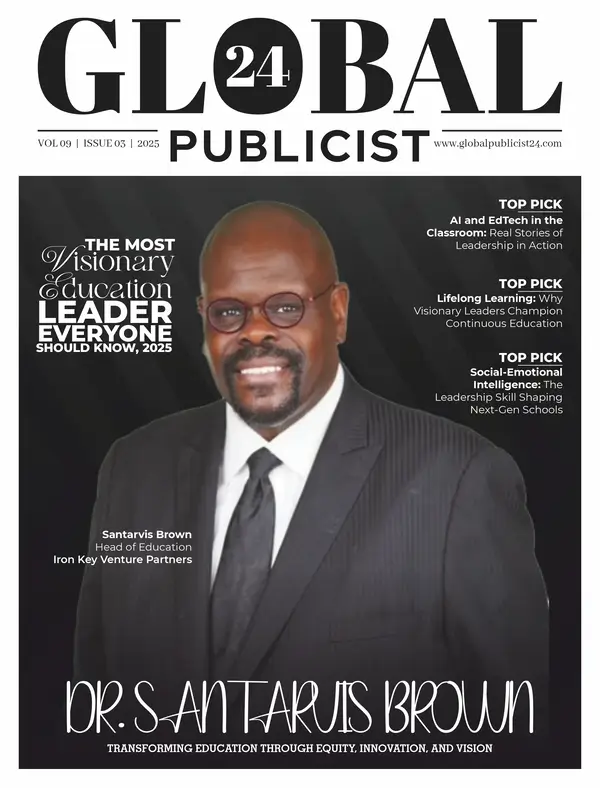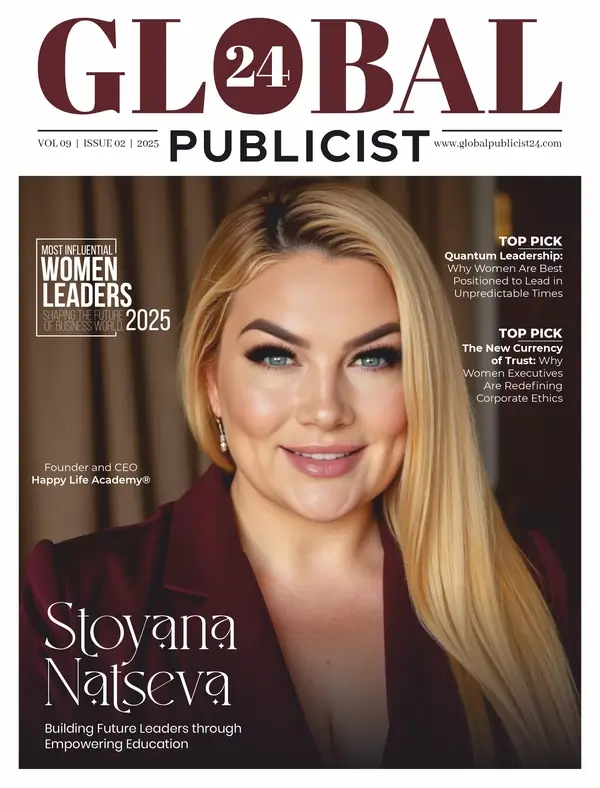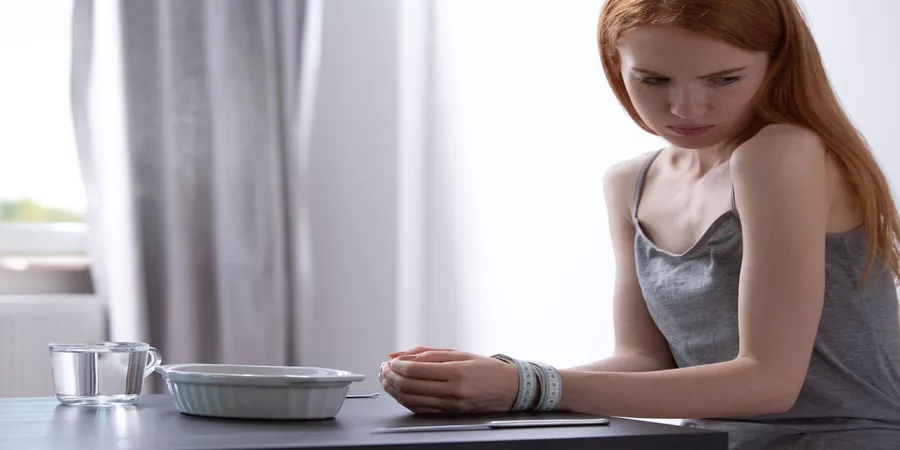Children’s footwear represents far more than miniature fashion statements properly fitted shoes directly impact musculoskeletal development during critical growth periods when bones, joints, and soft tissues remain malleable and vulnerable to deformation. According to research published in the Journal of Foot and Ankle Research, approximately 63% of children wear incorrectly sized shoes, with consequences ranging from immediate discomfort to long-term structural problems including bunions, hammertoes, in-toeing gait abnormalities, and chronic foot pain persisting into adulthood. Yet despite these stakes, most parents lack systematic frameworks for evaluating children’s shoe fit beyond general “room at the toe” guidance and the proliferation of online shopping, inconsistent sizing standards across manufacturers, and marketing emphasis on aesthetics over function compounds the challenge. For parents seeking to balance children’s legitimate desire for stylish, peer-approved footwear with the fundamental responsibility of protecting developing feet, understanding evidence-based fitting principles, age-specific developmental considerations, and practical assessment techniques proves essential. This comprehensive guide examines six fundamental strategies for selecting trendy kids shoes that fit properly, drawing from pediatric podiatry recommendations, orthopedic research, and practical insights from certified pedorthists who specialize in children’s footwear fitting.
Understanding Children’s Foot Development
How Children’s Feet Differ from Adult Feet
Before examining fitting techniques, parents must understand unique characteristics of developing feet:
Structural Differences:
Bone Development:
- Infants born with primarily cartilaginous feet (bones form gradually)
- Ossification (cartilage converting to bone) continues through adolescence
- Growth plates (epiphyseal plates) remain open until mid-to-late teens
- Developing bones more susceptible to deformation from pressure
Fat Pads:
- Infants and toddlers have substantial fat pads on foot bottoms
- Creates appearance of flat feet even when arch development normal
- Fat pads diminish around ages 2-3 as arches become visible
- Protects developing bones but makes visual assessment challenging
Flexibility:
- Children’s feet extremely flexible compared to adult feet
- Ligaments and tendons more elastic
- Can adapt to poorly fitting shoes without immediate pain signals
- This adaptability masks problems until damage occurs
Nerve Sensitivity:
- Children’s pain perception develops gradually
- May not recognize or articulate discomfort from ill-fitting shoes
- Behavioral indicators (refusing shoes, altered gait) more reliable than verbal complaints
Age-Based Growth Patterns
Children’s feet don’t grow at uniform rates growth velocity varies dramatically by developmental stage:
Infants and Toddlers (0-3 years):
- Rapid growth: Approximately 1-1.5 sizes every 2-3 months
- Frequent measurement essential
- Pre-walking infants: Shoes optional (barefoot optimal for sensory development)
- Early walkers: Flexible, protective shoes for outdoor use
Preschool (3-5 years):
- Moderate growth: Approximately 1 size every 3-4 months
- Increased activity demands durable, supportive footwear
- Fine motor skills developing (some can manage simple fasteners)
School-Age (6-10 years):
- Slower growth: Approximately 1 size every 4-6 months
- Wide activity range (athletics, school, play)
- Brand awareness and peer influence emerge
Pre-Adolescent/Adolescent (11-18 years):
- Growth spurts: Unpredictable rapid growth phases
- Girls’ feet typically reach adult size by 13-14 years
- Boys’ feet continue growing into late teens
- Adult sizing considerations begin applying
According to research from the American Academy of Pediatrics, growth rate variability means rigid measurement schedules (e.g., “measure every 2 months”) provide less value than symptom-based assessment observing gait changes, shoe wear patterns, and comfort complaints signals measurement timing more effectively.
Common Pediatric Foot Conditions Influenced by Footwear
Flexible Flat Feet (Pes Planus):
- Extremely common in young children (normal developmental variant)
- Most resolve naturally by age 6-8 without intervention
- Rigid flat feet or painful flat feet warrant podiatric evaluation
- Supportive (not corrective) footwear recommended
In-Toeing (Pigeon-Toed Gait):
- Multiple causes: Metatarsus adductus, tibial torsion, femoral anteversion
- Most resolve spontaneously without treatment
- Improper footwear doesn’t cause but can exacerbate
- Well-fitting, flexible shoes support natural resolution
Toe Walking:
- Idiopathic toe walking common in toddlers (typically resolves by age 5-6)
- Persistent toe walking may indicate neurological issues, tight Achilles tendons
- Shoes that are too small or stiff can contribute to toe walking
- Flexible shoes with proper fit allow normal heel-strike gait
Sever’s Disease (Calcaneal Apophysitis):
- Heel pain in active children ages 8-14
- Growth plate inflammation from repetitive stress
- Poorly cushioned or unsupportive shoes exacerbate condition
- Cushioned athletic shoes with heel support help manage symptoms
Bunions (Hallux Valgus):
- Increasingly common in children and adolescents
- Genetic predisposition primary cause, but tight toe boxes accelerate development
- Girls more affected than boys
- Wide toe box shoes essential for prevention and management
Tip 1 – Master Accurate Foot Measurement Techniques
Tools and Methods for Home Measurement
Brannock Device (Professional Standard):
- Metal measuring device found in shoe stores
- Measures length, width, and arch length simultaneously
- Most accurate method for sizing
- Many parents purchase home Brannock devices ($40-60)
Paper Tracing Method:
- Place paper on hard floor against wall
- Child stands on paper with heel against wall
- Trace around entire foot with pencil held vertically
- Measure from heel to longest toe
- Repeat for both feet (feet often differ in size)
- Add 0.5-0.7 inches for growth room
Smartphone Apps:
- Several apps use phone camera for foot measurement
- Accuracy varies; compare multiple apps for verification
- Useful for online shopping when professional fitting unavailable
- Examples: Shoe Size Finder, Happy Feet (UK), Shoe Fitting Pro
Ruler Measurement:
- Child stands barefoot on ruler
- Measure from heel to longest toe (not always big toe)
- Record in inches or centimeters
- Convert using size charts (acknowledge manufacturer variation)
When and How Often to Measure
Optimal Measurement Timing:
- Time of day: Late afternoon/evening (feet swell throughout day, morning measurements underestimate)
- Activity context: After active play (simulates in-use foot volume)
- Both feet: Always measure both (size differences common, fit to larger foot)
Measurement Frequency by Age:
- Ages 0-2: Every 4-6 weeks (rapid growth phase)
- Ages 3-5: Every 6-8 weeks
- Ages 6-10: Every 2-3 months
- Ages 11+: Every 3-4 months, more frequently during growth spurts
Symptom-Triggered Measurement: Measure immediately if child exhibits:
- Reluctance to wear previously comfortable shoes
- Red marks, blisters, or calluses on feet
- Walking on toes or altered gait
- Complaints of foot, leg, or back pain
- Visible shoe wear patterns (excessive creasing, heel wear)
Understanding Size Variations Across Brands
No Universal Standard: Unlike clothing (where sizes follow somewhat consistent standards), children’s shoe sizing varies dramatically:
US vs. European vs. UK Sizing:
- US sizes: Separate infant (0-13) and youth (1-7) ranges
- European sizes: Continuous numbering based on foot length in centimeters × 1.5
- UK sizes: Similar to US but offset (UK 1 ≈ US 2)
Brand-Specific Variations:
- Nike children’s shoes often run 0.5 size small (size up)
- Stride Rite tends to run true to size
- Kids’ Crocs often run large (many parents size down)
- European brands (Geox, Primigi) follow European sizing (convert carefully)
Width Availability:
- Most children’s shoes manufactured in medium width only
- Specialty brands offer narrow (N), medium (M), wide (W), extra-wide (XW)
- Stride Rite, New Balance, Tsukihoshi offer multiple widths
- Children with narrow or wide feet require careful brand selection
Practical Strategy:
- Measure child’s foot in centimeters/millimeters
- Use brand-specific size charts (available on manufacturer websites)
- Read reviews noting whether shoes run large, small, or true to size
- When purchasing online, order 2-3 sizes for try-on, return non-fitting options
Tip 2 – Apply the Comprehensive Fit Assessment
The Thumb-Width Rule and Beyond
Length Assessment:
Traditional Guidance: “Thumb-width of space between longest toe and shoe end”
More Precise Approach:
- 0.5-0.7 inches (12-17mm) growth room recommended
- Equivalent to adult thumb width (varies, but workable guideline)
- Press thumb firmly on shoe top over child’s longest toe
- Should feel child’s toe but not be pressed against shoe end
- Too much room (>0.75 inches): Shoe too long, causes tripping, blisters
- Too little room (<0.4 inches): Shoe too small, immediate replacement needed
Common Mistake: Parents asking “Do your toes touch the end?” Children often curl toes unconsciously, providing false fit indication. Physical assessment by parent more reliable than child’s self-report.
Width and Girth Fitting
Forefoot Width:
- Widest part of child’s foot should align with widest part of shoe
- Pinch shoe material at widest point with fingers
- Should be able to grasp small amount of material (indicates proper width)
- If material stretches taut: Too narrow
- If excessive material bunches: Too wide
Heel Fit:
- Insert finger between child’s heel and shoe heel counter
- Should fit snugly with minimal slippage
- Excessive room: Heel lifts during walking (blisters, altered gait)
- Too tight: Pressure sores, discomfort
Midfoot/Instep:
- Lacing/fastening system should allow adjustment for high or low insteps
- Shoe tongue shouldn’t create pressure points
- Fasteners shouldn’t gap excessively or strain to close
Flexibility and Sole Bend Test
Flexibility Assessment:
- Hold shoe at heel and toe
- Bend shoe at ball of foot (metatarsal heads, approximately 2/3 forward from heel)
- Should flex relatively easily
- Excessively stiff: Restricts natural foot motion, can cause gait problems
- Too flexible: Insufficient support, especially for heavier children
Age-Appropriate Flexibility:
- Infants/toddlers: Very flexible shoes (nearly barefoot simulation)
- Preschool: Moderate flexibility
- School-age/athletic shoes: More structure acceptable but must still bend at ball
Sole Twist Test:
- Attempt to twist shoe (wring like towel)
- Should resist twisting
- Excessive torsional flexibility: Inadequate midfoot support
- Complete rigidity: Over-engineered (rare in children’s shoes)
The Walk Test
In-Store Assessment:
- Child must walk, run, jump in shoes before purchase
- Observe from front, back, and sides
- Look for:
- Heel remaining in shoe (not slipping)
- Natural gait pattern (no toe walking, limping, altered stride)
- Toe box not collapsing or bulging
- No visible discomfort indicators (grimacing, favoring one foot)
Home Try-On Period:
- Wear shoes indoors only for 30-60 minutes (maintains return eligibility)
- Observe child during normal play activities
- Ask specific questions: “Do these pinch anywhere?” “Do your heels slip?” “Are they comfortable?”
- Check feet after removal for red marks, indentations, blisters
Sock Consideration:
- Fit shoes with socks child will wear
- Athletic socks (thicker) vs. dress socks (thinner) affect fit
- Seasonal variation (winter boots with thick socks)
Tip 3 – Prioritize Supportive Construction Features
Arch Support Requirements
Developmental Context:
- Healthy children don’t require arch support in most cases
- Flat feet in children under 6-8 years typically normal developmental variant
- Over-supporting developing arches can impede natural strengthening
When Support Matters:
- Rigid flat feet (arch doesn’t form even on tiptoe)
- Painful flat feet
- Diagnosed conditions (tarsal coalition, accessory navicular)
- Prescription orthotics requiring accommodating footwear
Moderate Support Features:
- Slight arch contour (not aggressive arch support)
- Firm heel counter (back of shoe) preventing excessive pronation
- Cushioned insole providing comfort without rigid correction
Brands with Good Support:
- Stride Rite (particularly “Made2Play” line)
- New Balance children’s athletic shoes
- Tsukihoshi (Japanese brand, excellent arch support)
- Keen (outdoor/athletic styles)
Heel Counter and Ankle Stability
Heel Counter Function:
- Firm cup at shoe back holding heel in place
- Prevents excessive heel movement (pronation, supination)
- Provides stability during walking, running
Assessment:
- Squeeze shoe heel between fingers
- Should feel firm, resist compression
- Flimsy heel counter: Inadequate support, especially for athletic activities
High-Top vs. Low-Top:
- High-top shoes provide ankle support for sports (basketball, hiking)
- Low-top adequate for most children’s daily activities
- Personal preference unless specific ankle instability exists
Cushioning and Impact Absorption
Sole Cushioning:
- Midsole (between outer sole and insole) provides impact absorption
- Particularly important for:
- Heavier children (more impact force)
- Athletic activities (running, jumping)
- Hard surfaces (concrete playgrounds, gym floors)
Materials:
- EVA (ethylene-vinyl acetate): Common, lightweight, good cushioning
- Polyurethane: Denser, more durable, slightly heavier
- Gel inserts: Premium cushioning (less common in children’s shoes)
Activity-Specific Requirements:
- Running/athletic: Substantial heel and forefoot cushioning
- Casual walking: Moderate cushioning adequate
- Dress shoes: Minimal cushioning acceptable for occasional wear
Toe Box Design
Adequate Toe Room:
- Toe box (front of shoe) should allow toes to spread naturally
- Pointed or narrow toe boxes compress toes (bunion development risk)
- Rounded or square toe boxes healthier for developing feet
Height:
- Adequate vertical space preventing toe compression
- Low-profile trendy shoes sometimes insufficient for taller feet
- Visible toe “tenting” indicates insufficient height
Material Flexibility:
- Toe box should flex during walking (toes dorsiflex upward during push-off)
- Stiff leather or synthetic materials restrict natural motion
Tip 4 – Select Appropriate Materials for Function and Health
Breathability and Moisture Management
Why Breathability Matters:
- Children’s feet perspire substantially (500+ sweat glands per square inch)
- Poor ventilation creates warm, moist environment (bacterial/fungal growth)
- Athlete’s foot, odor, discomfort result from trapped moisture
Material Comparison:
Excellent Breathability:
- Leather: Natural material, breathes well, durable, molds to foot
- Canvas: Very breathable, lightweight, less durable
- Mesh: Synthetic or natural, maximum ventilation, common in athletic shoes
Poor Breathability:
- Synthetic leather (pleather): Plastic-based, minimal breathability, common in inexpensive shoes
- Rubber/PVC: Completely non-breathable, appropriate only for rain boots, water shoes
- Heavily coated fabrics: Water-resistant treatments reduce breathability
Seasonal Considerations:
- Summer: Prioritize maximum breathability (mesh, canvas, sandals)
- Winter: Balance breathability with insulation (leather, technical fabrics)
- Rain: Waterproof boots appropriate for wet conditions, but limit daily use
Durability vs. Cost Trade-offs
Planned Obsolescence: Children outgrow shoes before wearing out (typical lifespan: 3-6 months per pair)
Quality Spectrum:
Budget Shoes ($15-30):
- Adequate for rapidly growing feet (4-6 month replacement)
- Lower quality materials, construction
- Appropriate for: Dress shoes (occasional wear), rapidly growing phases
Mid-Range Shoes ($30-60):
- Balance of quality and value
- Better materials, construction
- Appropriate for: Daily wear, school shoes, casual athletics
Premium Shoes ($60-100+):
- Highest quality materials, construction
- Often excessive for children (outgrow before wearing out)
- Appropriate for: Specialized athletics, orthotic compatibility, wide/narrow widths
Economic Strategy:
- Invest in daily-wear shoes (worn 6+ hours daily)
- Budget options for occasional-wear (dress shoes, seasonal items)
- Hand-me-downs viable if minimal wear, proper fit
Fastening Systems and Independence
Velcro (Hook-and-Loop):
- Pros: Easy for children to manage independently, secure fit, adjustable
- Cons: Wears out over time, less “cool” for older children
- Age range: Optimal for ages 2-7
Elastic Laces:
- Pros: Looks like traditional laces, no tying required, stays secure
- Cons: Less adjustable than real laces, can stretch out
- Age range: Suitable for all ages, particularly 5-10
Traditional Laces:
- Pros: Most adjustable, durable, classic appearance
- Cons: Requires tying skill (typically ages 6+), frequent retying
- Teaching opportunity: Fine motor skill development
Slip-On:
- Pros: Maximum convenience, no fastening required
- Cons: Less secure fit, can slip off during active play
- Appropriate for: Casual wear, quick errands, not athletics
Zipper:
- Pros: Secure, easy to use, fashionable (boots)
- Cons: Can break, sometimes pinches, adds cost
- Age range: Suitable for ages 4+
Developmental Consideration: While convenience matters for busy mornings, developing self-sufficiency (managing fasteners independently) represents important milestone. Balance ease with age-appropriate skill-building.
Tip 5 – Navigate Trend-Conscious Children and Peer Pressure
When Style Preferences Emerge
Age-Based Patterns:
- Ages 0-3: No preferences, parent-driven selection
- Ages 4-6: Beginning awareness, influenced by colors, characters
- Ages 7-10: Definite preferences, peer influence growing
- Ages 11+: Strong preferences, brand awareness, peer conformity pressure
Validating Children’s Preferences:
- Feeling included, trendy normal developmental need
- Shoes as self-expression, identity formation
- Balancing autonomy with parental guidance appropriate
Strategies for Win-Win Selection
Involve Children in Process:
- Set parameters (“We’re choosing athletic shoes with good support in your size”)
- Offer limited choices within parameters (“Which of these three do you prefer?”)
- Explain fit importance age-appropriately
- Validate preferences while maintaining fit standards
Compromise Techniques:
Trend-Appropriate Options:
- Most popular brands offer properly fitting options
- Nike, Adidas, New Balance make quality children’s athletic shoes
- Vans, Converse available in proper sizes (though minimal support limit to casual wear)
- Kids’ Crocs (linked brand) offer trendy options with reasonable support
Accessories for Personalization:
- Colorful laces transforming basic shoes
- Shoe charms, patches, decorative elements
- Custom insoles with favorite colors/characters
- Allows personal expression without compromising fit
Rotation Strategy:
- Primary shoes: Properly fitting, supportive (daily wear)
- Trend shoes: Less optimal fit acceptable for limited wear (weekends, special occasions)
- This acknowledges style desires while protecting foot health
Resisting Dangerous Trends
Problematic Shoe Styles:
Heels and Elevated Shoes:
- Any heel height inappropriate for children
- Alters natural gait, places excessive pressure on forefoot
- Platform shoes create ankle instability risk
- Flat shoes until skeletal maturity (late teens)
Minimalist/Barefoot Shoes:
- Popularized by adult running trends
- Insufficient support for most children’s activities
- May be appropriate for specific athletic training under professional guidance
- Not recommended for general daily wear
Oversized “Chunky” Sneakers:
- Trendy oversized aesthetic
- Actually oversized shoes cause tripping, altered gait, blisters
- If pursuing this style, maintain proper fit despite chunky appearance
Non-Functional Fashion Shoes:
- Shoes prioritizing appearance over function
- Examples: Thin soles, inadequate toe box, poor heel counter
- Limit to very occasional wear (photos, brief events)
Firm Boundaries: When child insists on inappropriate footwear, parent authority trumps preference:
- Explain health reasons age-appropriately
- Offer alternatives meeting both fit and style needs
- Remain firm despite protests (foot health non-negotiable)
Tip 6 – Establish Smart Shopping Strategies
Timing and Return Policies
Optimal Shopping Times:
- After active play: Feet at maximum size (replicates in-use conditions)
- Late afternoon/evening: Feet swell throughout day
- NOT first thing in morning: Smallest foot size, less accurate fit
Return Policy Importance:
- Only purchase from retailers with generous return policies
- Minimum 30 days, ideally 60-90 days
- Try shoes at home in normal activities
- Keep tags/packaging until confirming fit
Online vs. In-Store:
In-Store Advantages:
- Professional fitting assistance
- Immediate try-on and assessment
- No shipping delays
- Supporting local business
Online Advantages:
- Broader selection (sizes, widths, styles)
- Often lower prices
- Customer reviews providing fit insights
- Convenience for busy families
Hybrid Approach:
- Get professionally measured in-store
- Research online for best selection/price
- Order multiple sizes for home try-on
- Return non-fitting options
Professional Fitting Services
Where to Find Fitters:
- Stride Rite stores (trained fitting specialists)
- Independent children’s shoe stores
- Some department stores (Nordstrom offers kids’ fitting)
- Specialty orthopedic shoe stores
What Professional Fitters Provide:
- Brannock device measurement (length, width, arch length)
- Gait observation and analysis
- Brand and style recommendations based on foot characteristics
- Fitting expertise for children with special needs
When Professional Fitting Essential:
- First shoes (establishing baseline)
- Diagnosed foot conditions
- Unusual foot shapes (very wide, very narrow, high instep)
- Athletic shoes for serious athletes
- Orthotic-compatible footwear
Cost Consideration:
- Professional fitting typically free with purchase
- Worth visiting even if ultimately purchasing elsewhere (ethical: buy at least one pair from fitter to compensate expertise)
Quality Assessment in Store
Construction Quality Indicators:
Positive Signs:
- Substantial stitching (not just glued)
- Quality materials (genuine leather, durable synthetics)
- Secure sole attachment
- Reinforced high-wear areas (toe, heel)
- Brand reputation for quality
Warning Signs:
- Strong chemical odors (toxic materials, poor quality control)
- Loose stitching or glue residue
- Thin, flimsy materials
- Crooked stitching or misaligned components
- Unknown brands with extremely low prices
The Sniff Test: Literally smell shoes. Quality materials (leather) have mild, pleasant scent. Strong chemical odors suggest toxic materials or poor manufacturing avoid for children’s products.
Budget-Friendly Strategies
Consignment and Resale:
- Children’s resale stores often carry gently used shoes
- High-quality brands at fraction of retail price
- Inspect carefully for adequate tread, intact materials, no odor
- Only acceptable if minimal wear (many children outgrow before significant wear)
Seasonal Sales:
- Back-to-school sales (July-August)
- End-of-season clearance
- Black Friday/Cyber Monday
- Buy next season ahead (if confident about sizing)
Outlet Stores:
- Brand outlets offer significant discounts
- Prior-season styles (fashion lags acceptable for children)
- Verify quality equal to retail (some outlets sell lower-quality “made for outlet” goods)
Subscription/Membership Programs:
- Some retailers offer subscription discounts
- DSW, Nordstrom Rack loyalty programs
- Amazon Subscribe & Save occasionally includes children’s shoes
What NOT to Skimp On:
- Daily-wear shoes (worn 6+ hours daily)
- Athletic shoes for serious athletes
- Orthotic-compatible shoes
- Children with diagnosed foot conditions
Where Budget Options Acceptable:
- Dress shoes (occasional wear)
- Seasonal items (rain boots, snow boots used 2-3 months)
- Rapidly growing phases (replacing every 2 months)
Special Considerations
Children with Wide or Narrow Feet
Approximately 20-30% of children have feet outside standard medium width range:
Wide Feet:
- Brands: New Balance, Stride Rite, Tsukihoshi, Keen, See Kai Run (offer W, XW widths)
- Styles: Athletic shoes often wider than dress shoes
- Risks of improper fit: Bunions, calluses, pain, reluctance to wear shoes
Narrow Feet:
- Brands: Stride Rite, Pediped, smaller European brands
- Challenges: Fewer narrow options than wide options
- Adjustments: Lacing techniques to secure narrow heel, padded heel grips
- Risks of improper fit: Heel slippage, blisters, unstable gait
Professional Assessment: Children with significantly wide or narrow feet benefit from professional fitting establishing proper width and recommending appropriate brands.
Athletic Specialization Considerations
Sport-Specific Footwear: Ages 8+ seriously engaged in specific sports:
Running:
- Lightweight, flexible, substantial cushioning
- Proper fit crucial (running impact 3-4x body weight per step)
- Replace every 300-500 miles or when cushioning compresses
Basketball:
- Ankle support (high-tops or reinforced low-tops)
- Lateral stability for cutting movements
- Forefoot flexibility for jumping
Soccer:
- Cleats appropriate for field surface
- Snug fit (loose soccer cleats impair ball control)
- Proper breakin period (leather cleats especially)
Dance/Gymnastics:
- Minimal, flexible shoes (or barefoot)
- Split-sole designs allowing articulation
- Snug fit preventing trips
Professional Fitting: Specialty running stores, athletic shoe stores often provide gait analysis and sport-specific fitting worth investment for serious young athletes.
Children with Special Needs
Sensory Processing Disorders:
- Seamless interiors (no irritating seams)
- Soft, flexible materials
- Easy on/off (elastic laces, wide openings)
- Brands: Tsukihoshi, Plae, Billy Footwear (zipper that opens completely)
Orthotic Accommodation:
- Removable insoles essential
- Adequate depth to accommodate orthotic without crowding
- Brands explicitly marketing orthotic-friendly designs
- Professional fitting recommended
Mobility Issues:
- AFO (Ankle-Foot Orthosis) compatible shoes
- Extra depth, width
- Adaptive fastening
- Specialty vendors: Stride Rite, Zappos Adaptive, Billy Footwear
When to Seek Professional Help
Red Flags Requiring Podiatric Evaluation
Symptoms Warranting Medical Assessment:
- Persistent pain (foot, leg, knee, hip, back) associated with walking
- Limping or altered gait not improving with proper shoes
- Rigid flat feet (arch doesn’t form even on tiptoes)
- Significant asymmetry (one foot substantially different from other)
- Toe walking persisting beyond age 5-6
- In-toeing or out-toeing not improving with age
- Frequent trips, falls, clumsiness despite appropriate shoes
- Refusal to participate in age-appropriate physical activities due to foot discomfort
Specialists:
- Pediatric Podiatrist: Foot and ankle specialist focusing on children
- Pediatric Orthopedist: Musculoskeletal specialist, broader focus
- Certified Pedorthist: Footwear and orthotic specialist (CPed credential)
- Physical Therapist: Gait analysis and therapeutic intervention
What to Expect:
- Comprehensive foot examination (structure, flexibility, strength)
- Gait analysis (walking and running observation)
- Possible imaging (X-rays if structural abnormalities suspected)
- Treatment recommendations (observation, physical therapy, orthotics, footwear modifications, rarely surgery)
Custom Orthotics vs. Over-the-Counter Inserts
When Orthotics May Be Recommended:
- Significant biomechanical abnormalities (severe pronation, supination)
- Diagnosed conditions (tarsal coalition, leg length discrepancy, cerebral palsy)
- Pain not resolving with proper footwear alone
- Athletic injuries related to foot mechanics
Custom Orthotics:
- Individually fabricated based on foot molds/scans
- Expensive ($300-$800+ per pair)
- Insurance sometimes covers with medical necessity documentation
- Require orthotic-compatible footwear (removable insoles, adequate depth)
- Need replacement as feet grow (typically annually for children)
Over-the-Counter (OTC) Inserts:
- Generic arch support products
- Substantially less expensive ($15-40)
- May provide adequate support for mild issues
- Brands: Superfeet, Powerstep, Spenco
Professional Guidance: Never use orthotics (custom or OTC) without professional recommendation. Unnecessary arch support can impede natural foot development and weaken intrinsic foot muscles.
Maintaining Shoes and Monitoring Fit
Care and Cleaning
Extending Shoe Life:
Cleaning Methods:
- Athletic shoes: Machine washable (many brands) in cold water, air dry
- Leather shoes: Wipe with damp cloth, leather conditioner periodically
- Canvas: Spot clean or machine wash (remove laces first)
- Avoid: Harsh chemicals, bleach, high heat (damages materials, adhesives)
Odor Control:
- Alternate pairs (allows shoes to dry between wears)
- Antimicrobial insole sprays or inserts
- Baking soda overnight (absorbs moisture and odor)
- Ensure socks worn (absorb perspiration)
- Thoroughly dry wet shoes before next wear
Storage:
- Store in ventilated area (not plastic bins without air circulation)
- Shoe trees or stuffing maintains shape
- Rotate pairs preventing excessive wear
When Replacement Necessary Regardless of Size:
- Worn tread (loss of traction, safety hazard)
- Compressed cushioning (no longer provides impact absorption)
- Structural damage (separated soles, torn materials, broken fasteners)
- Persistent odor not resolving with cleaning
Monitoring Ongoing Fit
Weekly Visual Inspection:
- Check for new wear patterns (indicate fit or gait problems)
- Observe child’s gait in various shoes
- Note any new reluctance to wear specific shoes
- Look for physical signs (red marks, blisters, calluses)
Monthly Fit Assessment:
- Thumb-width test (growth room check)
- Ask child about comfort
- Observe heel slippage
- Check for toe compression
Seasonal Transitions:
- Reassess fit when switching seasonal footwear
- Summer sandals, winter boots often stored 6+ months
- Children grow during storage period
- Never assume last year’s seasonal shoes still fit
Growth Spurts:
- Sudden rapid growth (common in pre-adolescence)
- May require measurement and replacement within weeks
- Watch for sudden clumsiness or complaints (indicate outgrown shoes)
Teaching Children Self-Awareness
Age-Appropriate Shoe Care Education:
Ages 3-5:
- Where shoes belong (cubby, closet, not scattered)
- How to identify left vs. right
- Basic fastening (velcro, simple buckles)
Ages 6-8:
- How shoes should feel (comfortable, not tight, heel secure)
- Identifying discomfort vs. temporary adjustment period
- Basic cleaning (wipe mud, put in designated spot)
- Lace tying
Ages 9-12:
- Understanding fit principles (growth room, support)
- Recognizing when shoes no longer fit properly
- Appropriate shoe selection for activities
- Maintaining shoes (cleaning, proper storage)
Ages 13+:
- Independent fit assessment
- Balancing style preferences with functional requirements
- Financial awareness (shoe costs, value, quality)
- Transition to adult-focused footwear decisions
Empowering Self-Advocacy: Teach children to speak up about discomfort rather than quietly tolerating ill-fitting shoes. Many children, especially younger ones, don’t recognize or communicate fit problems. Building body awareness and communication skills prevents prolonged wear of improper footwear.
Addressing Common Parental Concerns
“But They’re Expensive and Will Be Outgrown Soon”
Financial Reality: Children’s shoes represent recurring, significant expense average family with 2-3 children spends $400-$800 annually on footwear.
Cost-Benefit Analysis:
Short-Term Costs:
- Quality shoes: $40-70 per pair
- 4-6 pairs annually per child
- Total: $160-420 per child annually
Long-Term Savings:
- Prevention of foot problems (podiatric treatment, orthotics, surgery costs thousands)
- Prevention of secondary problems (knee, hip, back issues from poor foot mechanics)
- Better quality lasts longer, reducing replacement frequency
- Proper fit reduces damage to shoes (excessive wear from abnormal gait)
Perspective: Compared to other child expenses (childcare, education, activities), footwear represents relatively modest investment with direct health implications. Saving money on shoes often proves false economy.
“My Child Refuses to Wear Properly Fitting Shoes”
Behavioral Strategies:
Ages 2-5 (Limited Reasoning):
- Choices within boundaries: “Do you want the blue shoes or red shoes?” (both fit properly)
- Positive reinforcement: Praise wearing appropriate shoes
- Natural consequences: Appropriate shoes required for desired activities (playground, sports)
- Consistency: No negotiation on health/safety issues
Ages 6-10 (Emerging Logic):
- Education: Age-appropriate explanation of foot development, health importance
- Involve in process: Shoe shopping together, explaining fit principles
- Compromise: Find properly fitting options in preferred styles
- Social framing: “Athletes wear supportive shoes,” “Your favorite celebrity wears similar shoes”
Ages 11+ (Peer Influence Strong):
- Respect autonomy: Acknowledge style importance, identity expression
- Collaborative problem-solving: “Let’s find shoes that fit properly AND look cool”
- Financial literacy: Discuss quality, value, trade-offs
- Health consequences: Age-appropriate discussion of bunions, pain, long-term effects
- Boundary reinforcement: Non-negotiable health requirements with flexible style options
When Professional Help Needed: If shoe refusal extreme or associated with sensory issues, anxiety, or other behavioral concerns, consult pediatrician or child psychologist. Some children with sensory processing differences genuinely struggle with certain shoe features professional guidance identifies accommodations vs. behavioral management needs.
“Hand-Me-Down Shoes Are Wasteful Not to Use”
When Hand-Me-Downs Acceptable:
- Minimal wear (outgrown before significant use)
- Same foot size and width as recipient child
- Clean, odor-free, structurally sound
- No excessive wear patterns (even wear)
- Not more than 1-2 years old (materials degrade)
When Hand-Me-Downs Problematic:
- Worn insoles/midsoles: Compression patterns conform to original wearer’s foot (different from recipient’s foot)
- Wear patterns: Gait-specific wear transfers to new wearer, potentially affecting their gait
- Size differences: Even “close enough” sizing problematic (children’s feet need precise fit)
- Different foot shapes: Wide feet child wearing narrow feet child’s shoes (or vice versa)
- Age/deterioration: Adhesives, materials degrade over time even without wear
Compromise:
- Hand-me-downs acceptable for occasional-wear shoes (dress shoes, seasonal boots with minimal use)
- Never acceptable for daily-wear shoes or athletic shoes
- Inspect thoroughly before use
- Replace if any concerns about fit or condition
Economic Alternatives:
- Consignment/resale stores (lightly used, not previously owned by specific child)
- End-of-season sales on next year’s sizes
- Outlet stores
- Budget allocation recognizing footwear as health necessity, not optional expense
The Bigger Picture: Lifelong Foot Health
Consequences of Chronic Improper Fitting
Short-Term Effects (Immediate to 6 months):
- Blisters, calluses, corns
- Nail problems (ingrown toenails, black toenails from toe-box pressure)
- Acute pain affecting activity participation
- Altered gait patterns (limping, toe-walking, reluctance to run/play)
Medium-Term Effects (6 months to 5 years):
- Bunions (hallux valgus) development or progression
- Hammertoes
- Flat feet exacerbation (in children predisposed)
- Knee, hip, or back pain from altered biomechanics
- Reduced athletic performance and participation
Long-Term Effects (5+ years, persisting into adulthood):
- Permanent foot deformities requiring surgical correction
- Chronic pain limiting activity, career options, quality of life
- Osteoarthritis (accelerated joint wear from abnormal mechanics)
- Significant healthcare costs
- Psychological impact (body image, activity avoidance)
Research Evidence: Study published in Journal of Foot and Ankle Research found that individuals who wore poorly fitting shoes in childhood had 3.2x higher rate of foot problems in adulthood compared to those with properly fitted childhood footwear. Prevention during developmental years proves dramatically more effective than treatment after structural damage occurs.
Developing Healthy Foot Habits
Beyond Proper Footwear:
Barefoot Time:
- Safe barefoot walking strengthens intrinsic foot muscles
- Sensory development (proprioception, balance)
- Natural gait pattern reinforcement
- Appropriate environments: Home, grass, sand beach (not pavement, public areas)
Foot Exercises:
- Toe spreading, curling exercises
- Picking up small objects with toes
- Balance activities (single-leg standing, balance boards)
- Ankle range of motion exercises
Activity Variety:
- Walking, running, jumping, climbing develop different aspects of foot strength and coordination
- Avoid single-sport specialization too early (overuse injuries)
- Encourage diverse movement patterns
Body Awareness:
- Teaching children to recognize discomfort, pain
- Understanding when to rest vs. push through minor discomfort
- Recognizing difference between muscle fatigue and injury pain
Modeling Healthy Footwear Choices
Parental Influence: Children observe and emulate parental behavior:
What Parents Model:
- Wearing properly fitting shoes (not sacrificing fit for fashion)
- Appropriate shoe selection for activities
- Foot care and hygiene
- Treating footwear as health investment, not pure fashion
Consistency: Parents who prioritize their children’s proper footwear while ignoring their own foot health send mixed messages. Whole-family approach to foot health proves most effective.
Conclusion: Balancing Health, Style, and Practicality
Finding trendy kids shoes that actually fit properly requires integrating multiple considerations: accurate measurement techniques, comprehensive fit assessment, supportive construction features, appropriate materials, developmental understanding, and strategic shopping approaches. While the process demands more time and attention than simply grabbing visually appealing shoes in approximate sizes, the investment protects developing feet during critical growth periods when bones, joints, and soft tissues remain malleable and vulnerable to deformation.
The six strategies examined mastering measurement techniques, applying comprehensive fit assessment, prioritizing supportive construction, selecting appropriate materials, navigating style preferences, and establishing smart shopping strategies provide framework for systematic footwear selection balancing children’s legitimate desire for peer-approved, stylish footwear with fundamental responsibility of protecting foot health.
Key principles to remember:
Fit Over Fashion: No matter how trendy or desirable, shoes that don’t fit properly damage developing feet. Non-negotiable health requirements can accommodate style preferences through strategic brand and style selection within fit parameters.
Active Monitoring: Children’s feet grow rapidly and unpredictably. Regular measurement, ongoing fit assessment, and attention to behavioral and physical indicators prevent prolonged wear of outgrown shoes.
Quality Where It Matters: Budget constraints are real, but daily-wear shoes and athletic footwear represent health investments warranting quality prioritization. Strategic economizing on occasional-wear items enables appropriate spending where foot health demands.
Professional Resources: Certified pedorthists, trained fitting specialists, and pediatric podiatrists provide expertise that DIY approaches cannot replicate particularly for initial fittings, unusual foot shapes, diagnosed conditions, and serious athletes.
Developmental Perspective: Properly fitted shoes during childhood create foundation for lifelong foot health. Prevention during developmental years proves infinitely more effective and less costly than treating deformities and chronic pain in adulthood.
Empowerment and Education: Teaching children about fit principles, body awareness, and self-advocacy builds skills extending beyond footwear selection contributing to overall health literacy and personal responsibility development.
For parents navigating the challenge of keeping active, growing children properly shod while respecting style preferences, budget realities, and busy schedules, systematic approach grounded in evidence-based fitting principles provides roadmap. The effort invested in proper footwear selection during childhood pays dividends in foot health, comfort, activity participation, and quality of life extending throughout adulthood making it one of the most impactful health investments parents make on their children’s behalf.













